This site uses cookies as defined in our Cookie Policy, by continuing to use this site you agree to their use.
Continue
| Arrive | Depart | ||||||
| 29th29 | AugAug | 202626 | Venice, Italy, embark on the Royal Clipper | ||||
Venice is a city unlike any other. No matter how often you've seen it in photos and films, the real thing is more dreamlike than you could imagine. With canals where streets should be, water shimmers everywhere. The fabulous palaces and churches reflect centuries of history in what was a wealthy trading center between Europe and the Orient. Getting lost in the narrow alleyways is a quintessential part of exploring Venice, but at some point you'll almost surely end up in Piazza San Marco, where tourists and locals congregate for a coffee or an aperitif. Venice is the heart and soul of romance. Cast your eye on the rounded domes of San Marco, take a deep breath at the Bridge of Sighs, gaze on the golden lions and the Renaissance glories of the Doge's Palace, listen for the ghosts of Verdi, Puccini and Caruso at La Fenice Opera House, gape at the classic Palladian proportions of the Church of San Giorgio Maggiore, glide in a gondola down the Grand Canal. And know that love is always in the air in Venice. | |||||||
| 30th30 | AugAug | 202626 | Rovinj, Croatia | ||||
One of the true jewels of the Mediterranean, Rovinj is a jaw-droppingly beautiful town, which juts out into sparkling Mediterranean. Dominated by the pencil-like bell tower of the Venetian Saint Euphemia Cathedral, pine tree forests flow to the borders of the quaint Old Town - which evokes the romantic, tangled backstreets of the Venice. Rovinj - or Rovino in Italian - is a city of split personalities, with two official languages - having been owned by the Kingdom of Italy between 1919 and 1947. Rovinj is a typical example of a Mediterranean town. The town is dominated by the Baroque three-nave church of St. Euphemia (Fuma). Close to the harbour are the clock tower, the Baroque Balbi's Arch and the former 17th century Town Hall. To the east lies the complex of the Franciscan monastery and to the south, Rovinj's oldest monument, the Romanesque heptagonal chapel of the Holy Trinity. | |||||||
| 31st31 | AugAug | 202626 | Sibenik, Croatia | ||||
Šibenik's main monument, its Gothic-Renaissance cathedral, built of pale-gray Dalmatian stone and designated a UNESCO World Heritage Site, stands on a raised piazza close to the seafront promenade. From here a network of narrow, cobbled streets leads through the medieval quarter of tightly packed, terra-cotta–roof houses, and up to the ruins of a 16th-century hilltop fortress. The city has never been a real tourist destination. Before the Croatian war for independence, it was a relatively prosperous industrial center, but when the factories closed, Šibenik sank into an economic depression. However, the cathedral more than warrants a look, and it makes a decent base for visiting the waterfalls of Krka National Park. Šibenik, Croatia, is a charming coastal town on the Adriatic Sea known for its rich history and stunning architecture. The town is home to the UNESCO-listed St. James Cathedral, a masterpiece of Renaissance art. With its narrow, winding streets and views of the sea, Šibenik offers a blend of medieval charm and beautiful coastal scenery, making it a popular destination in Croatia. | |||||||
| 1st01 | SepSep | 202626 | Dubrovnik, Croatia | ||||
Nothing can prepare you for your first sight of Dubrovnik. Lying 216 km (135 miles) southeast of Split and commanding a jaw-dropping coastal location, it is one of the world's most beautiful fortified cities. Its massive stone ramparts and fortress towers curve around a tiny harbor, enclosing graduated ridges of sun-bleached orange-tiled roofs, copper domes, and elegant bell towers. Your imagination will run wild picturing what it looked like seven centuries ago when the walls were built, without any suburbs or highways around it, just this magnificent stone city rising out of the sea.In the 7th century AD, residents of the Roman city Epidaurum (now Cavtat) fled the Avars and Slavs of the north and founded a new settlement on a small rocky island, which they named Laus, and later Ragusa. On the mainland hillside opposite the island, the Slav settlement called Dubrovnik grew up. In the 12th century the narrow channel separating the two settlements was filled in (now the main street through the Old Town, called Stradun), and Ragusa and Dubrovnik became one. The city was surrounded by defensive walls during the 13th century, and these were reinforced with towers and bastions in the late 15th century.From 1358 to 1808 the city thrived as a powerful and remarkably sophisticated independent republic, reaching its golden age during the 16th century. In 1667 many of its splendid Gothic and Renaissance buildings were destroyed by an earthquake. The defensive walls survived the disaster, and the city was rebuilt in baroque style.Dubrovnik lost its independence to Napoléon in 1808, and in 1815 passed to Austria-Hungary. During the 20th century, as part of Yugoslavia, the city became a popular tourist destination, and in 1979 it was listed as a UNESCO World Heritage Site. During the war for independence, it came under heavy siege. Thanks to careful restoration, few traces of damage remain; however, there are maps inside the Pile and Ploče Gates illustrating the points around the city where damage was done. It’s only when you experience Dubrovnik yourself that you can understand what a treasure the world nearly lost It was George Bernard Shaw who said: 'Those who seek paradise on earth should come to Dubrovnik.' Indeed, Dubrovnik is a treasure by any measure made more precious by its miraculous restoration. Crowned by the Minceta Tower, the 10th century city walls are the proud symbol of Dubrovnik's colourful history. | |||||||
| 2nd02 | SepSep | 202626 | Kotor, Montenegro | ||||
Backed by imposing mountains, tiny Kotor lies hidden from the open sea, tucked into the deepest channel of the Bokor Kotorska (Kotor Bay), which is Europe's most southerly fjord. To many, this town is more charming than its sister UNESCO World Heritage Site, Dubrovnik, retaining more authenticity, but with fewer tourists and spared the war damage and subsequent rebuilding which has given Dubrovnik something of a Disney feel.Kotor's medieval Stari Grad (Old Town) is enclosed within well-preserved defensive walls built between the 9th and 18th centuries and is presided over by a proud hilltop fortress. Within the walls, a labyrinth of winding cobbled streets leads through a series of splendid paved piazzas, rimmed by centuries-old stone buildings. The squares are now haunted by strains from buskers but although many now house trendy cafés and chic boutiques, directions are still given medieval-style by reference to the town’s landmark churches.In the Middle Ages, as Serbia's chief port, Kotor was an important economic and cultural center with its own highly regarded schools of stonemasonry and iconography. From 1391 to 1420 it was an independent city-republic and later, it spent periods under Venetian, Austrian, and French rule, though it was undoubtedly the Venetians who left the strongest impression on the city's architecture. Since the breakup of Yugoslavia, some 70% of the stone buildings in the romantic Old Town have been snapped up by foreigners, mostly Brits and Russians. Porto Montenegro, a new marina designed to accommodate some of the world’s largest super yachts, opened in nearby Tivat in 2011, and along the bay are other charming seaside villages, all with better views of the bay than the vista from Kotor itself where the waterside is congested with cruise ships and yachts. Try sleepy Muo or the settlement of Prčanj in one direction around the bay, or Perast and the Roman mosaics of Risan in the other direction. This stunning rock-walled chasm splitting the coastal mountains of Montenegro is the longest arm of the sea in southern Europe. Boka harbours one of the prettiest, unspoiled towns you'll ever see, the medieval city of Kotor. Founded by the Romans, fortified during the Byzantine era, then ruled by Venice for much of its history, Kotor has been naturally preserved by its isolation. | |||||||
| 3rd03 | SepSep | 202626 | Monopoli, Italy | ||||
| Set along the Adriatic coast, this historic Italian town captivates with its whitewashed buildings, narrow alleys, and charming seaside views. The ancient harbor is filled with colorful fishing boats, giving the town an authentic and lively atmosphere. Visitors can explore medieval churches, relax on pristine beaches, and savor delicious Apulian cuisine in this picturesque coastal destination. | |||||||
| 4th04 | SepSep | 202626 | At Sea | ||||
| 5th05 | SepSep | 202626 | Siracuse, Sicily, Italy | ||||
Siracusa, known to English speakers as Syracuse, is a wonder to behold. One of the great ancient capitals of Western civilization, the city was founded in 734 BC by Greek colonists from Corinth and soon grew to rival, and even surpass, Athens in splendor and power. It became the largest, wealthiest city-state in the West and a bulwark of Greek civilization. Although Siracusa lived under tyranny, rulers such as Dionysius filled their courts with Greeks of the highest cultural stature—among them the playwrights Aeschylus and Euripides, and the philosopher Plato. The Athenians, who didn't welcome Siracusa's rise, set out to conquer Sicily, but the natives outsmarted them in what was one of the greatest military campaigns in ancient history (413 BC). The city continued to prosper until it was conquered two centuries later by the Romans.Present-day Siracusa still has some of the finest examples of Baroque art and architecture; dramatic Greek and Roman ruins; and a Duomo that's the stuff of legend—a microcosm of the city's entire history in one building. The modern city also has a wonderful, lively, Baroque old town worthy of extensive exploration, as well as pleasant piazzas, outdoor cafés and bars, and a wide assortment of excellent seafood. There are essentially two areas to explore in Siracusa: the Parco Archeologico (Archaeological Zone), on the mainland; and the island of Ortygia, the ancient city first inhabited by the Greeks, which juts out into the Ionian Sea and is connected to the mainland by two small bridges. Ortygia is becoming increasingly popular with tourists, and is starting to lose its old-fashioned charm in favor of modern boutiques.Siracusa's old nucleus of Ortygia, a compact area, is a pleasure to amble around without getting unduly tired. In contrast, mainland Siracusa is a grid of wider avenues. At the northern end of Corso Gelone, above Viale Paolo Orsi, the orderly grid gives way to the ancient quarter of Neapolis, where the sprawling Parco Archeologico is accessible from Viale Teracati (an extension of Corso Gelone). East of Viale Teracati, about a 10-minute walk from the Parco Archeologico, the district of Tyche holds the archaeological museum and the church and catacombs of San Giovanni, both off Viale Teocrito (drive or take a taxi or city bus from Ortygia). Coming from the train station, it's a 15-minute trudge to Ortygia along Via Francesco Crispi and Corso Umberto. If you're not up for that, take one of the free electric buses leaving every 10 minutes from the bus station around the corner. Syracuse is a city on the Ionian coast of Sicily that's known for its ancient ruins. It was once the largest city in the world, bigger than Athens and Corinth and as you can imagine it's steeped in history. Visit Parco Archeologico della Neapolis, one of Sicily's greatest archaeological sites. Relax in one of it's stylish little cafes that surround it's beautiful baroque piazzas before wandering down it's medieval lanes towards the sparkling blue sea. | |||||||
| 6th06 | SepSep | 202626 | Lipari, Italy | ||||
The largest and most developed of the Aeolians, Lipari welcomes you with distinctive pastel-color houses. Fields of spiky agaves dot the northernmost tip of the island, Acquacalda, indented with pumice and obsidian quarries. In the west is San Calogero, where you can explore hot springs and mud baths. From the red-lava base of the island rises a plateau crowned with a 16th-century castle and a 17th-century cathedral. The Aeolian archipelago is made up of 7 islands of volcanic origin, of which only Stromboli and Vulcano are still active volcanoes. The main island is Lipari, which offers travellers arriving by boat a beautiful panorama of its Acropolis, presided over by the Cathedral. Its marina is bustling with shops, boutiques and stalls... it's an island where life is good. | |||||||
| 7th07 | SepSep | 202626 | Sorrento, Italy | ||||
Sorrento may have become a jumping-off point for visitors to Pompeii, Capri, and Amalfi, but you can find countless reasons to love it for itself. The Sorrentine people are fair-minded and hardworking, bubbling with life and warmth. The tuff cliff on which the town rests is spread over the bay, absorbing sunlight, while orange and lemon trees waft their perfume in spring. Winding along a cliff above a small beach and two harbors, the town is split in two by a narrow ravine formed by a former mountain stream. To the east, dozens of hotels line busy Via Correale along the cliff—many have "grand" included in their names, and some indeed still are. To the west, however, is the historic sector, which still enchants. It's a relatively flat area, with winding, stone-paved lanes bordered by balconied buildings, some joined by medieval stone arches. The central piazza is named after the poet Torquato Tasso, born here in 1544. This part of town is a delightful place to walk through. Craftspeople are often at work in their stalls and shops and are happy to let you watch; in fact, that's the point. Music spots and bars cluster in the side streets near Piazza Tasso. Sorrento, whose city walls rise straight out of the sea, is located on the lovely Amalfi Coast and overlooks the Bay of Naples. Optional excursions might include taking a trip back in history to Pompeii, where the ashen remains of ancient Romans lie frozen in time. | |||||||
| 8th08 | SepSep | 202626 | Ponza Island, Italy | ||||
| The pastel houses of Ponza Town rise in neat terraced rows from the busy harbour where sleekly groomed yachts and ramshackle fishing boats moor side by side. Happily, there are few tourists here, so it's a delight to wander through the unspoiled town. | |||||||
| 8th08 | SepSep | 202626 | Palmarola Island, Italy | ||||
| Palmarola is a snorkelling heaven that is part of a group called The Pontine Islands, located off the coast between Rome and Naples. A craggy landscape with pink coral beaches and emerald coves beckons so don't forget your swimsuit and flippers. Totally unique, isolated and stunning. | |||||||
| 9th09 | SepSep | 202626 | Civitavecchia, Italy, disembark the Royal Clipper | ||||
Italy's vibrant capital lives in the present, but no other city on earth evokes its past so powerfully. For over 2,500 years, emperors, popes, artists, and common citizens have left their mark here. Archaeological remains from ancient Rome, art-stuffed churches, and the treasures of Vatican City vie for your attention, but Rome is also a wonderful place to practice the Italian-perfected il dolce far niente, the sweet art of idleness. Your most memorable experiences may include sitting at a caffè in the Campo de' Fiori or strolling in a beguiling piazza. Civitavecchia is an important seaport serving Rome, the Italian capital. As a key entry point for Mediterranean cruises and ferries crossing the Tyrrhenian Sea, Civitavecchia offers a gateway to a variety of destinations in Italy and beyond. The city is 70 km from Rome and 62 km to Fiumiccino airport. | |||||||
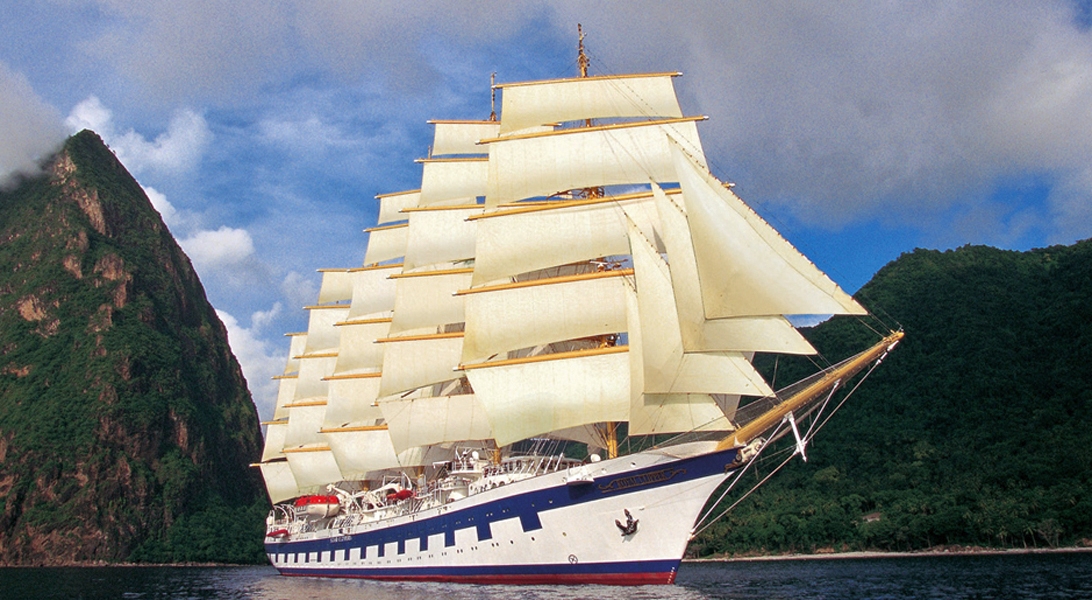




The images shown are for illustration purposes only and may not be an exact representation of what you find on the ship.
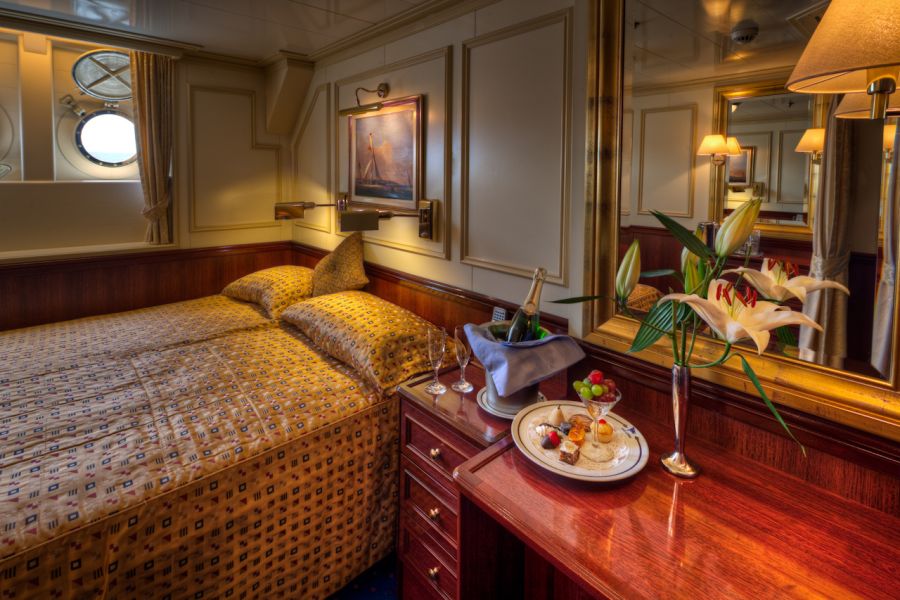
| Grade Code | From | To | |
| CAT5 | Category 5 | £4,005 | £4,005 |
Category 5 staterooms feature ocean views, a double bed, and a marble bathroom with shower. Each stateroom also benefits from air conditioning, hair dryers, private safe, television, DVD player, telephone and other amenities an experienced traveller has come to expect.
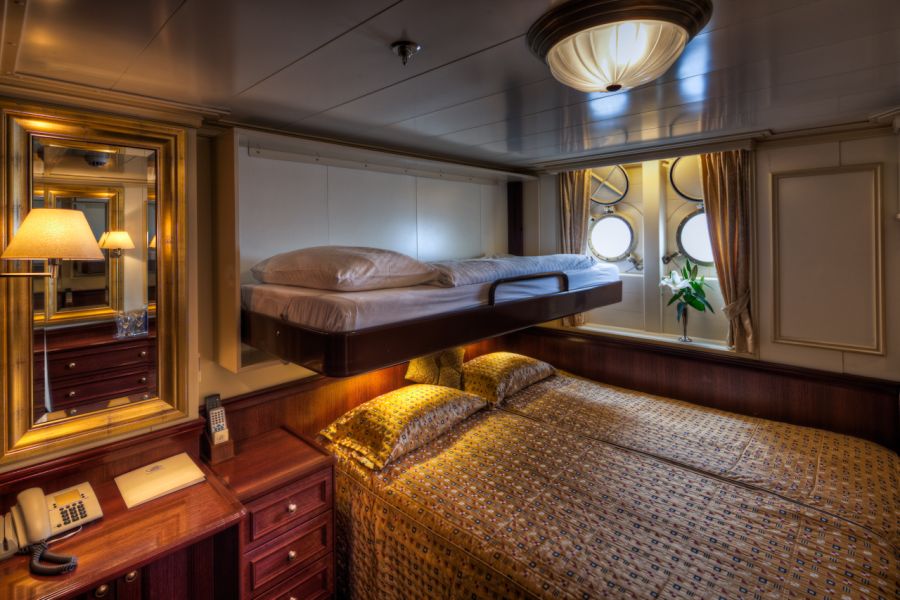
| Grade Code | From | To | |
| CAT6 | Category 6 | £3,875 | £3,875 |
Category 6 staterooms feature double/triple beds, and marble bathroom with shower. Each stateroom also benefits from air conditioning, hair dryers, private safe, television, DVD player, telephone and other amenities an experienced traveller has come to expect.
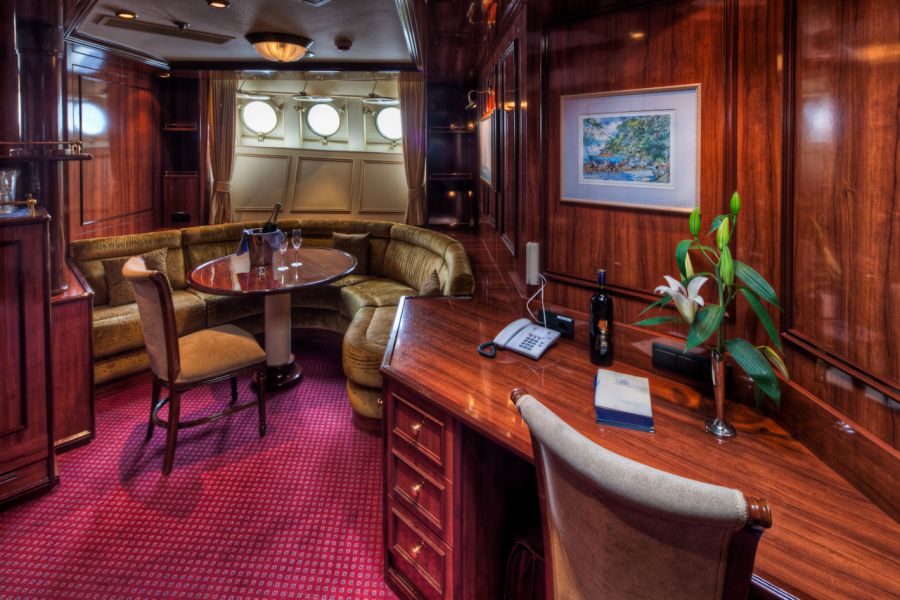
Owner's Suites (no private veranda) feature ocean views, two double beds, separate sitting area, minibar, marble bathroom with whirlpool, and room service. Each stateroom also benefits from air conditioning, hair dryers, private safe, television, DVD player, telephone and other amenities an experienced traveller has come to expect.
The images shown are for illustration purposes only and may not be an exact representation of what you find on the ship.
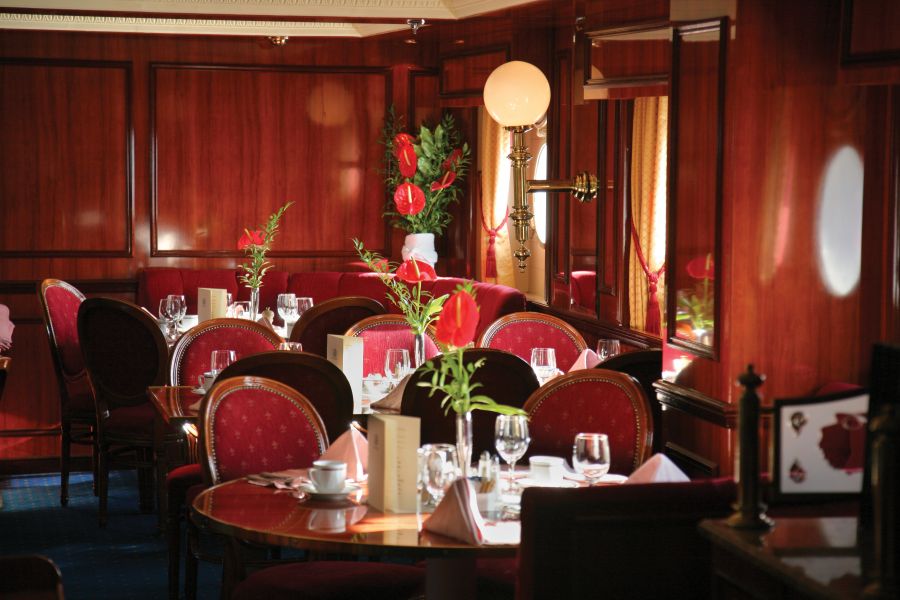
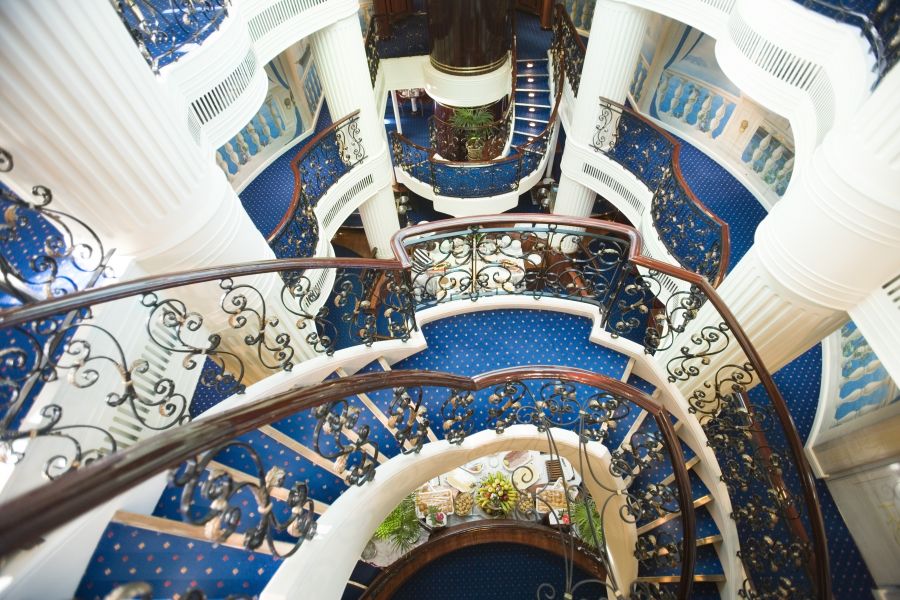
When you rise, help yourself to a continental breakfast with Parisian croissants or sweet Danish pastries. Or savour a full breakfast with fresh tropical fruit and crisp bacon, grilled sausage and omelettes cooked to order in the dining room.
At lunch, a marvellous buffet of seafood, salads and grilled favourites awaits your pleasure. If the day includes a stop at one of the paradisical islands we frequent, you might also be treated to a succulent outdoor barbecue on shore.
When evening comes, our elegantly appointed dining room becomes the setting for the chef’s finest culinary presentations, designed to please the eye and the palate, complemented by a selection of equally fine wines.
You’ll find our service to be friendly and gracious, befitting a tasteful restaurant. Of course, we would not presume to dictate your seating preferences. On all three ships, you are free to dine when and with whomever you wish - including with our officers, who join our guests in the dining room most nights. The dress code? No need for formal gowns and black tie, casual elegance is the order of the day and every single night.
The images shown are for illustration purposes only and may not be an exact representation of what you find on the ship.
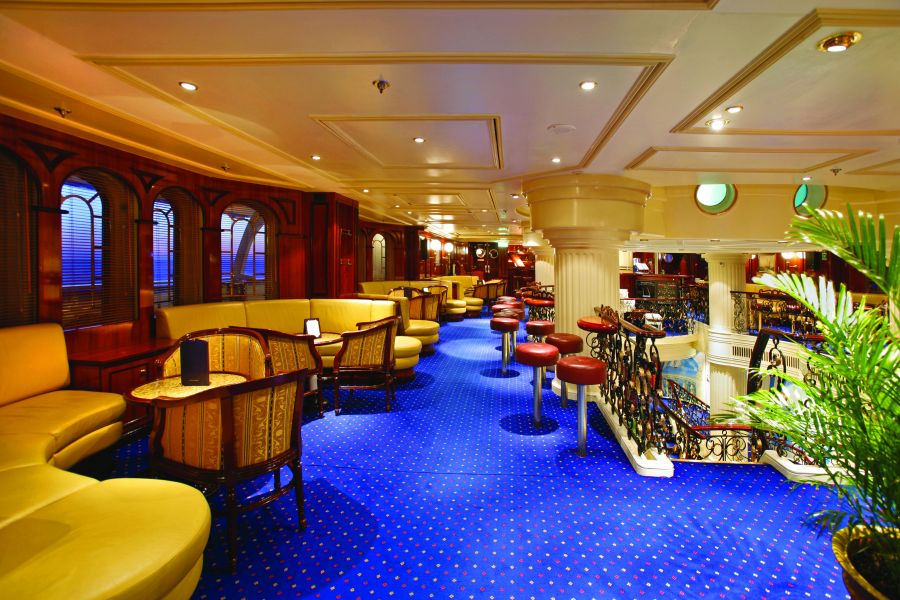
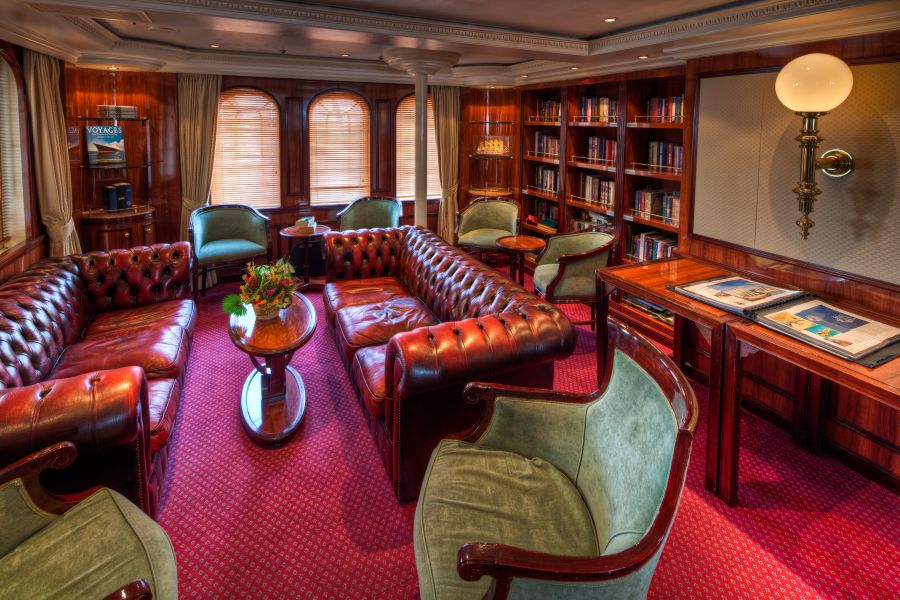
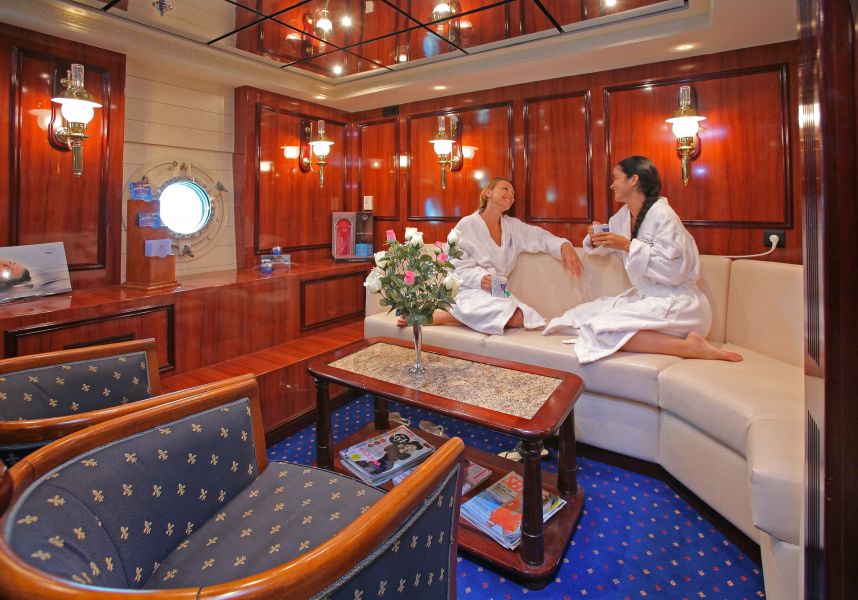
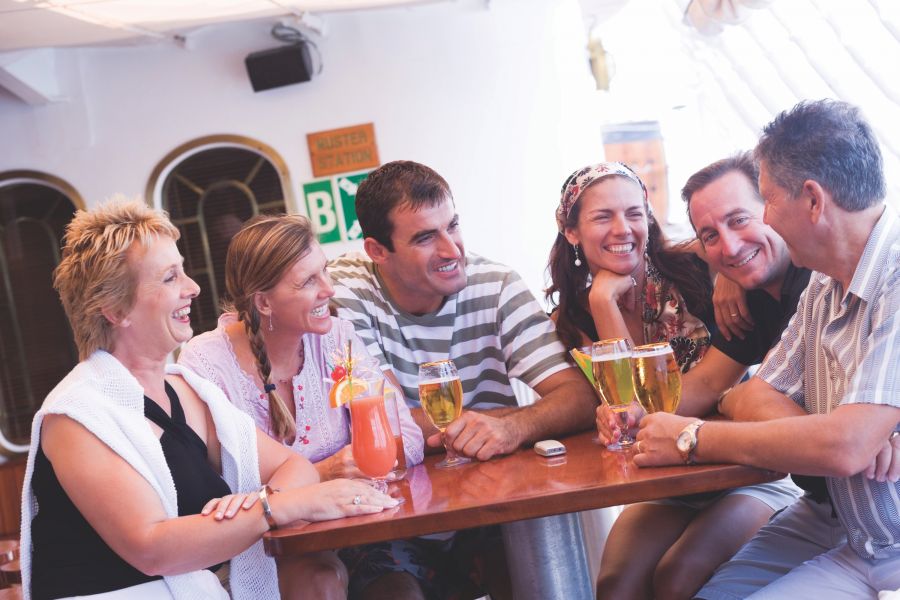
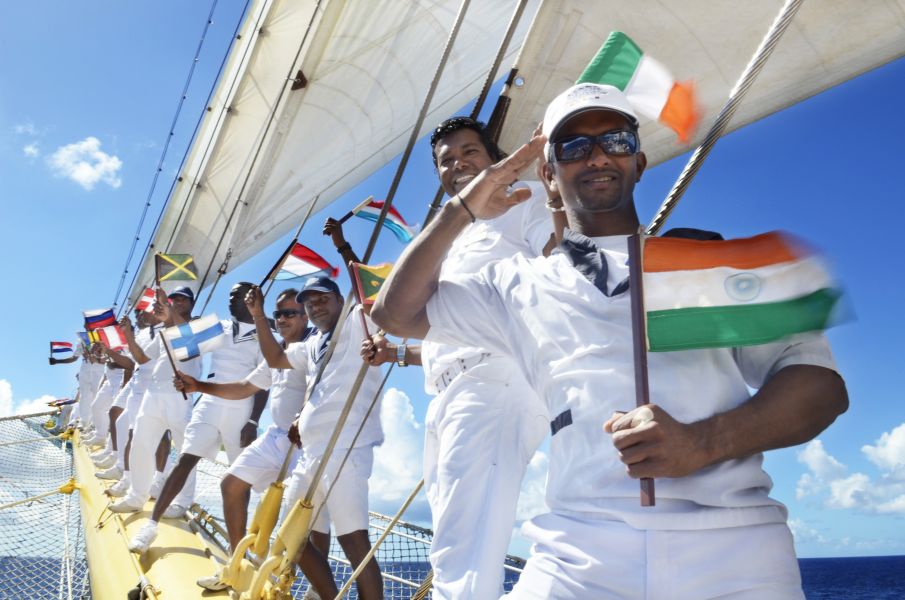
If your time isn't taken up by searching out distant lands from the crow’s nest or enjoying a lovingly prepared meal in the dining room; you can always take a seat in the Observation Lounge, find solitude in the Library, enjoy a drink in the Tropical Bar, or enjoy some live music in the Piano Bar.
The images shown are for illustration purposes only and may not be an exact representation of what you find on the ship.
The images shown are for illustration purposes only and may not be an exact representation of what you find on the ship.
| 11 nights aboard the Royal Clipper | |||
| Water sports including water skiing & snorkelling | |||
| Transportation into town (available most ports) | |||
| Unique learn to sail experiences | |||
| Port Taxes and Fees | |||
 | ABTA and ATOL Protection* | ||
Date 29th Aug 2026 |
Nts 11 |
Please call for availability |
| Interior staterooms from | £3,875pp | ||
| CAT6 | Category 6 | £3,875pp | |
| Oceanview staterooms from | £4,005pp | ||
| CAT5 | Category 5 | £4,005pp | |
| CAT4 | Category 4 | £4,350pp | |
| CAT3 | Category 3 | £4,585pp | |
| CAT2 | Category 2 | £4,805pp | |
| CAT1 | Category 1 | £5,340pp | |
| Suite staterooms from | £6,865pp | ||
| DEL | Deluxe Cabin | £6,865pp | |
| OWNC | Owners Cabin | £7,335pp | |
Fusion Cruises when selling travel arrangements is a trading name of The Midcounties Co-operative Ltd. Fusion Cruises is an Accredited Body Member of Midcounties Co-operative Travel Consortium. (ABTA:P6652, ATOL:6053).
Book with Confidence. We are a Member of ABTA which means you have the benefit of ABTA’s assistance and Code of Conduct.
Some of the flights and flight-inclusive holidays on this website are financially protected by the ATOL scheme but ATOL protection does not apply to all holiday and travel services offered on this website. This website will provide you with information on the protection that applies in the case of each holiday and travel service offered before you make your booking. If you do not receive an ATOL Certificate then the booking will not be ATOL protected. If you do receive an ATOL Certificate but all parts of your trip are not listed on it, those parts will not be ATOL protected. Please see our booking conditions for information, or for more information about financial protection and the ATOL Certificate go to: www.caa.co.uk
